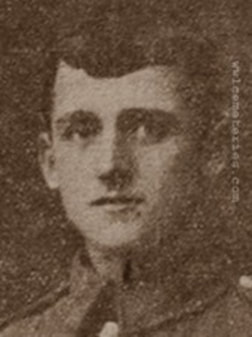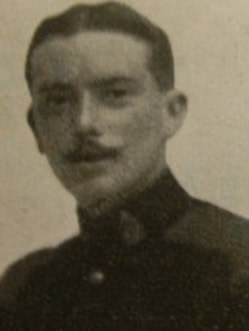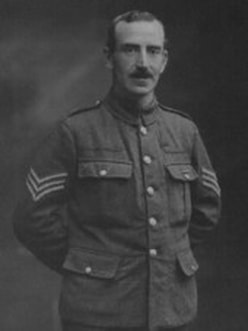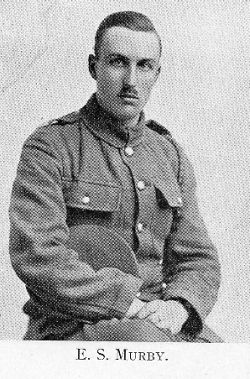Tyne Cot Memorial
Roll of Honour
M

35541 Signaller
Archie Mitchell
10th Bn. Royal Warwickshire Regiment
10th April 1918, aged 19.
Panel 23 to 28 and 163A.
Son of William Henry and Louisa Mitchell, of 15, King's Terrace, Sandygate, Burnley, Lancashire.
Archie Mitchell
10th Bn. Royal Warwickshire Regiment
10th April 1918, aged 19.
Panel 23 to 28 and 163A.
Son of William Henry and Louisa Mitchell, of 15, King's Terrace, Sandygate, Burnley, Lancashire.

Second Lieutenant
Lionel Henry Mulkern
123rd Coy. Machine Gun Corps. (Infantry)
26th September 1917, aged 33.
Panel 154 to 159 and 163A.
Territorial Efficiency Medal.
Son of Henry Cowell Mulkern and Fanny J. Mulkern; husband of Mary Louise Mulkern,
of 19, The Crossways, Onslow Village, Guildford.
Lionel Henry Mulkern
123rd Coy. Machine Gun Corps. (Infantry)
26th September 1917, aged 33.
Panel 154 to 159 and 163A.
Territorial Efficiency Medal.
Son of Henry Cowell Mulkern and Fanny J. Mulkern; husband of Mary Louise Mulkern,
of 19, The Crossways, Onslow Village, Guildford.

6080 Serjeant
George Allen Mullin
11th Bn. Manchester Regiment
4th October 1917, aged 36.
Panel 120 to 124 and 162 to 162A and 163A.
Son of Mary Mullin (formerly Bond, maiden name Crompton) and Thomas Mullin of Town Lane, Dukinfield. Husband of Mary Redfern, Newton (deceased 1912) and later of Nellie Page of West Kensington, London, married 1st July, 1917. Father of Thomas (British Columbia, Canada), Elsie Scholes (Oldham), John (Oldham) and George Allen (deceased 1918).
Picture courtesy of Corinne McCallum, great granddaughter
George Allen Mullin
11th Bn. Manchester Regiment
4th October 1917, aged 36.
Panel 120 to 124 and 162 to 162A and 163A.
Son of Mary Mullin (formerly Bond, maiden name Crompton) and Thomas Mullin of Town Lane, Dukinfield. Husband of Mary Redfern, Newton (deceased 1912) and later of Nellie Page of West Kensington, London, married 1st July, 1917. Father of Thomas (British Columbia, Canada), Elsie Scholes (Oldham), John (Oldham) and George Allen (deceased 1918).
Picture courtesy of Corinne McCallum, great granddaughter

117276 Lance Bombardier
Edward Stanley Murby
"C" Battery, 186th Brigade, Royal Field Artillery
13th December 1917, aged 21.
Panel 4 to 6.
The information below supplied by 'The Ellesmerian Club', the alumni organisation for Ellesmere College where Edward was a pupil.
Edward Stanley Murby
"C" Battery, 186th Brigade, Royal Field Artillery
13th December 1917, aged 21.
Panel 4 to 6.
The information below supplied by 'The Ellesmerian Club', the alumni organisation for Ellesmere College where Edward was a pupil.
Edward Stanley Murby was born on 15th November 1896, the son of William E. and Mary (née Smith) Murby. Originally from the south of England, Edward’s family were living in Hale, Cheshire, when he started his two year career at Ellesmere College.
On his arrival in January 1911, he was placed in the ‘Heywood’ dormitory which he was to represent at football, hockey and cricket. He was a member of the winning soccer team in the Autumn Term of 1912 inter-dormitory competition. In that year, he won the Form Prize for Maths and the Form Instrumental Prize. He was also to win the High Dive for Over 15’s in the summer. Edward was elected to the Debating Society in his final term and was also a member of the newly formed fire brigade.
Edward left Ellesmere and went to work for the Tootal Broadhurst Lee Company, cotton spinners and manufacturers, and it was from their employ that he enlisted to become Private Murby, Service No: 117276, ‘C’ Battery, the Royal Field Artillery. The unit was raised in August 1915 by the Thames Ironworks Company and seconded to the 186th Brigade.
This Brigade took part in many of the main actions of 1916 and 1917, thus Edward would have been involved in the attacks on Thiepval and the Schwaben Redoubt in the autumn of 1916. In the latter months of that year, the Brigade moved north to Ypres where it maintained heavy fire on enemy strong points.
At 0400 hours on 31st July 1917, in appalling weather, the Third Battle of Ypres began. The Brigade sustained heavy casualties, but managed to maintain its bombardment of the enemy. A real problem was the receiving of supplies as the horses and the routes they followed were targets for the enemy gunners.
On 18th November, the guns were moved to Passchendale and, for twenty-four hours a day, they ceaselessly harassed enemy movements. They were not, however, able to avoid attack for “the enemy’s artillery carried out most intense shoots daily in the areas occupied by the guns, and the casualties to the guns were numerous”. They could not move the guns to a safer position. “The ground around the batteries was simply a mass of shell craters filled with liquid mud and it was practically impossible to move a single gun from its position.”
Edward was one of those who lost his life in these conditions. His official date of death is given as 13thDecember 1917. His body was never identified or recovered and he is remembered on the Tyne Cot Memorial, very near to where he lost his life. He was awarded the British War Medal and the Victory Medal
The life of Lance Bombardier Murby is also commemorated on memorials at Hale and Ellesmere College. The memorial that was at Bradbury Central School, Altrincham, which Edward attended, was lost when the school moved premises.
On his arrival in January 1911, he was placed in the ‘Heywood’ dormitory which he was to represent at football, hockey and cricket. He was a member of the winning soccer team in the Autumn Term of 1912 inter-dormitory competition. In that year, he won the Form Prize for Maths and the Form Instrumental Prize. He was also to win the High Dive for Over 15’s in the summer. Edward was elected to the Debating Society in his final term and was also a member of the newly formed fire brigade.
Edward left Ellesmere and went to work for the Tootal Broadhurst Lee Company, cotton spinners and manufacturers, and it was from their employ that he enlisted to become Private Murby, Service No: 117276, ‘C’ Battery, the Royal Field Artillery. The unit was raised in August 1915 by the Thames Ironworks Company and seconded to the 186th Brigade.
This Brigade took part in many of the main actions of 1916 and 1917, thus Edward would have been involved in the attacks on Thiepval and the Schwaben Redoubt in the autumn of 1916. In the latter months of that year, the Brigade moved north to Ypres where it maintained heavy fire on enemy strong points.
At 0400 hours on 31st July 1917, in appalling weather, the Third Battle of Ypres began. The Brigade sustained heavy casualties, but managed to maintain its bombardment of the enemy. A real problem was the receiving of supplies as the horses and the routes they followed were targets for the enemy gunners.
On 18th November, the guns were moved to Passchendale and, for twenty-four hours a day, they ceaselessly harassed enemy movements. They were not, however, able to avoid attack for “the enemy’s artillery carried out most intense shoots daily in the areas occupied by the guns, and the casualties to the guns were numerous”. They could not move the guns to a safer position. “The ground around the batteries was simply a mass of shell craters filled with liquid mud and it was practically impossible to move a single gun from its position.”
Edward was one of those who lost his life in these conditions. His official date of death is given as 13thDecember 1917. His body was never identified or recovered and he is remembered on the Tyne Cot Memorial, very near to where he lost his life. He was awarded the British War Medal and the Victory Medal
The life of Lance Bombardier Murby is also commemorated on memorials at Hale and Ellesmere College. The memorial that was at Bradbury Central School, Altrincham, which Edward attended, was lost when the school moved premises.




